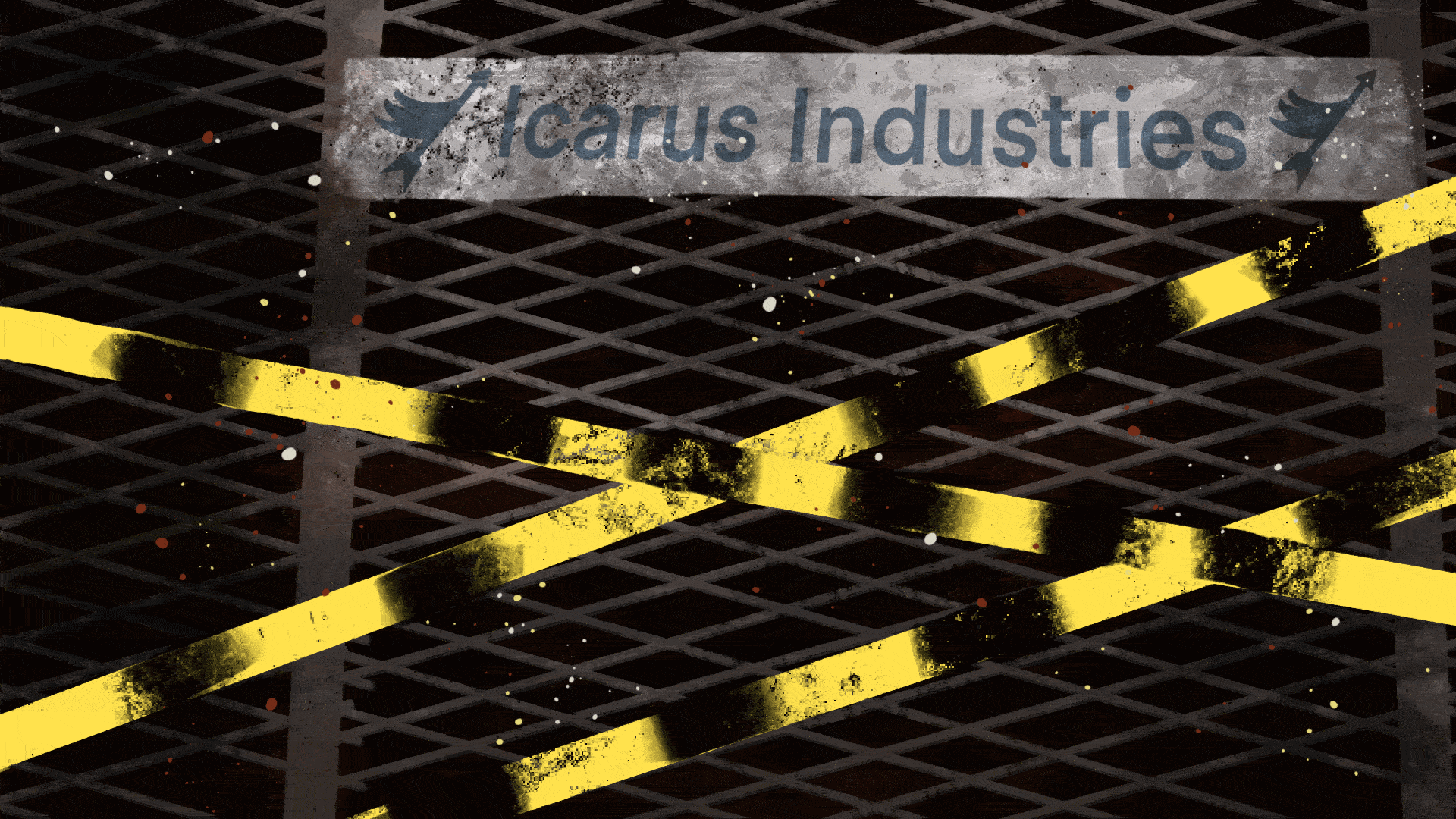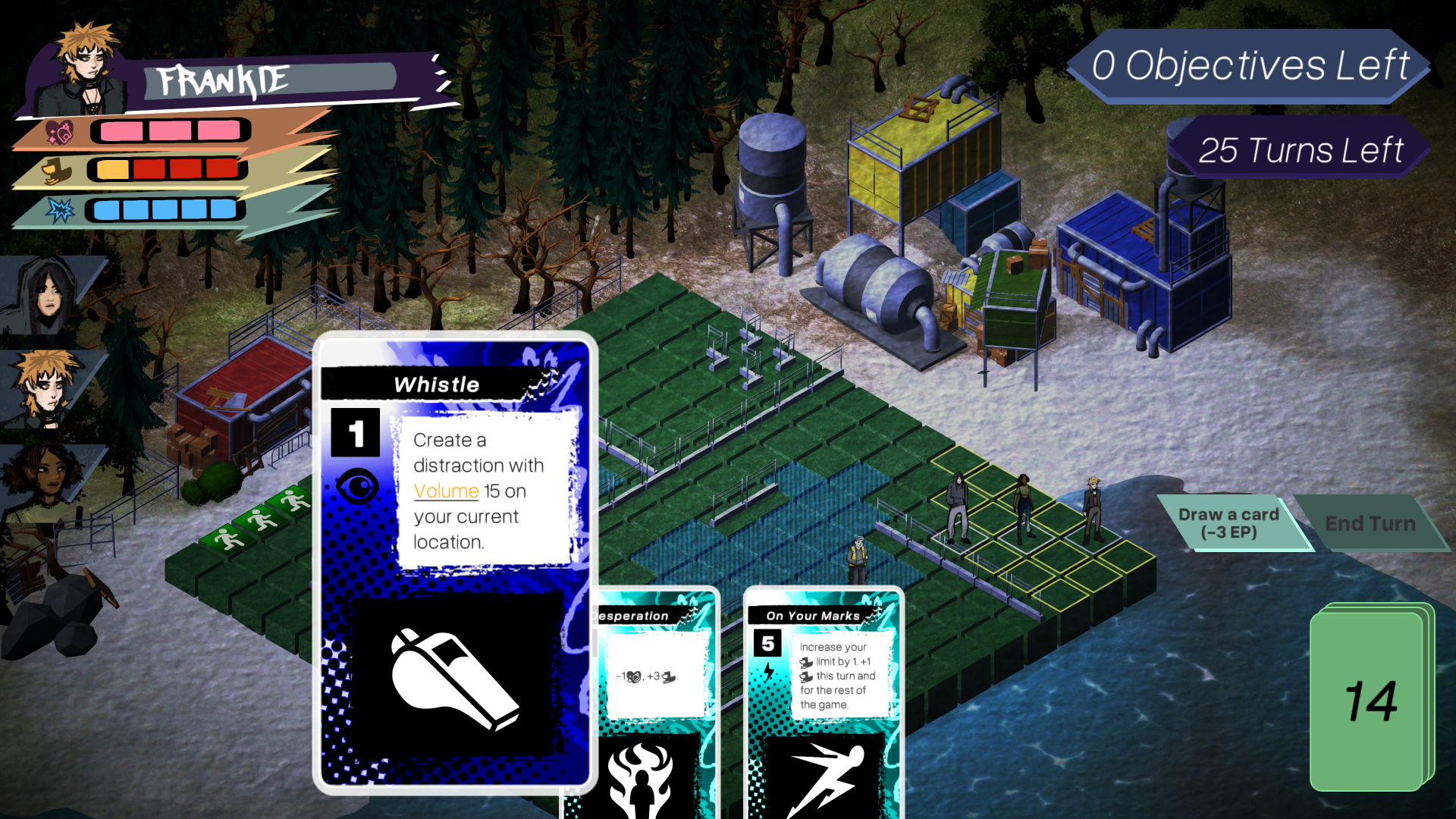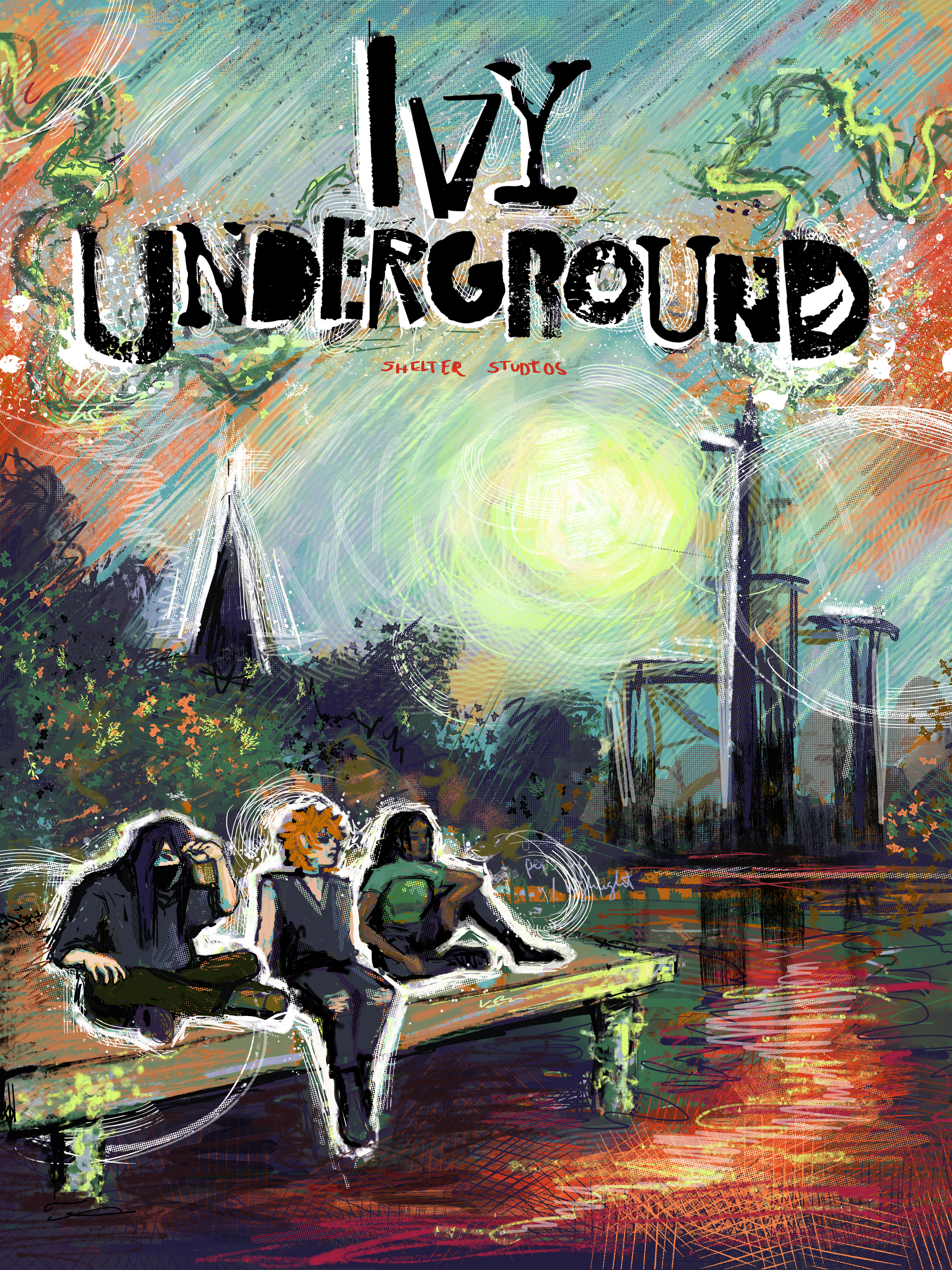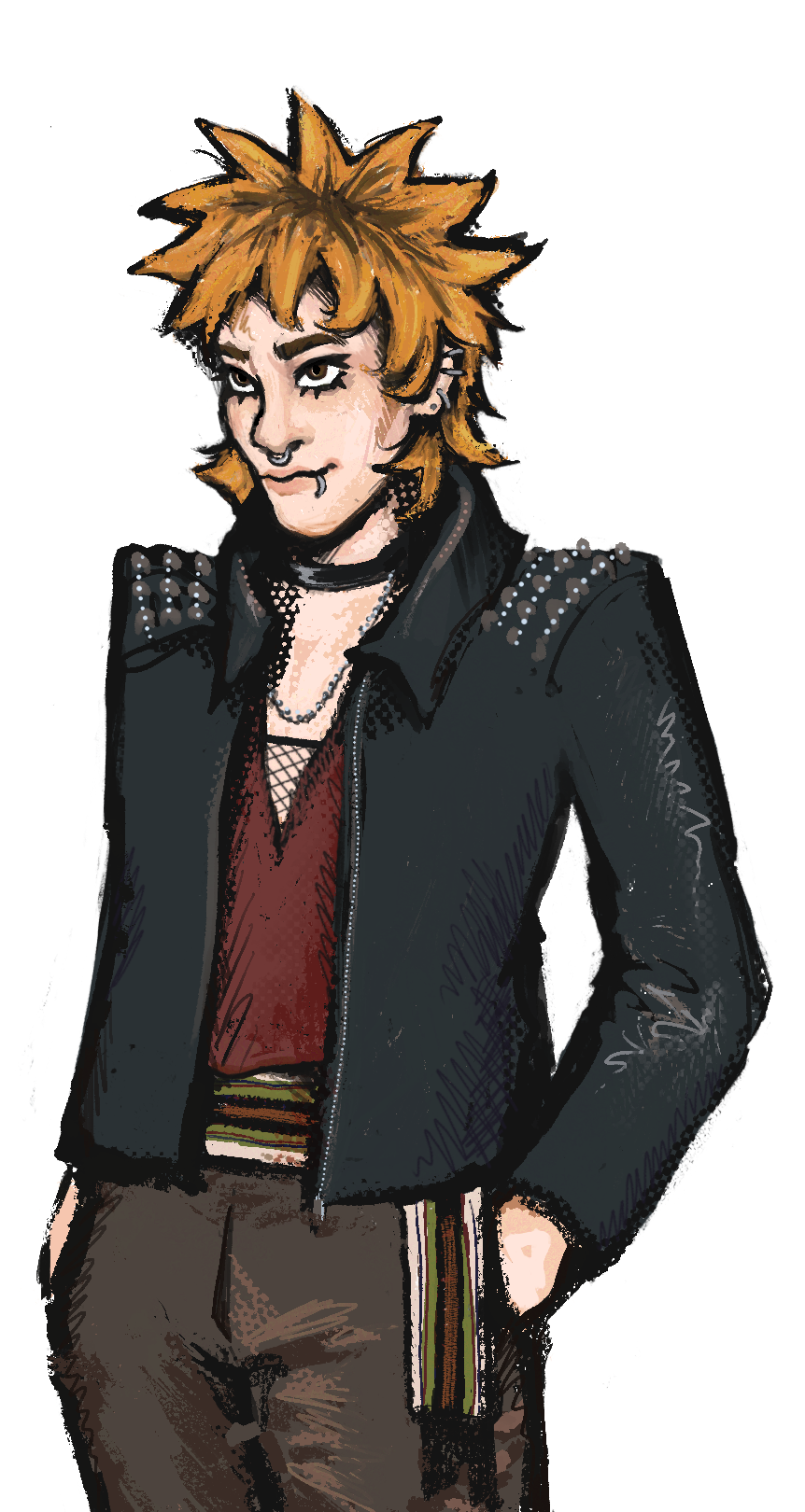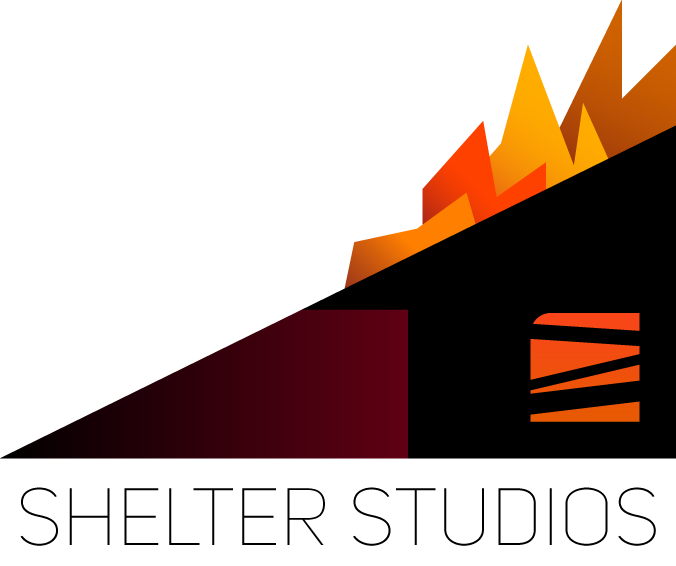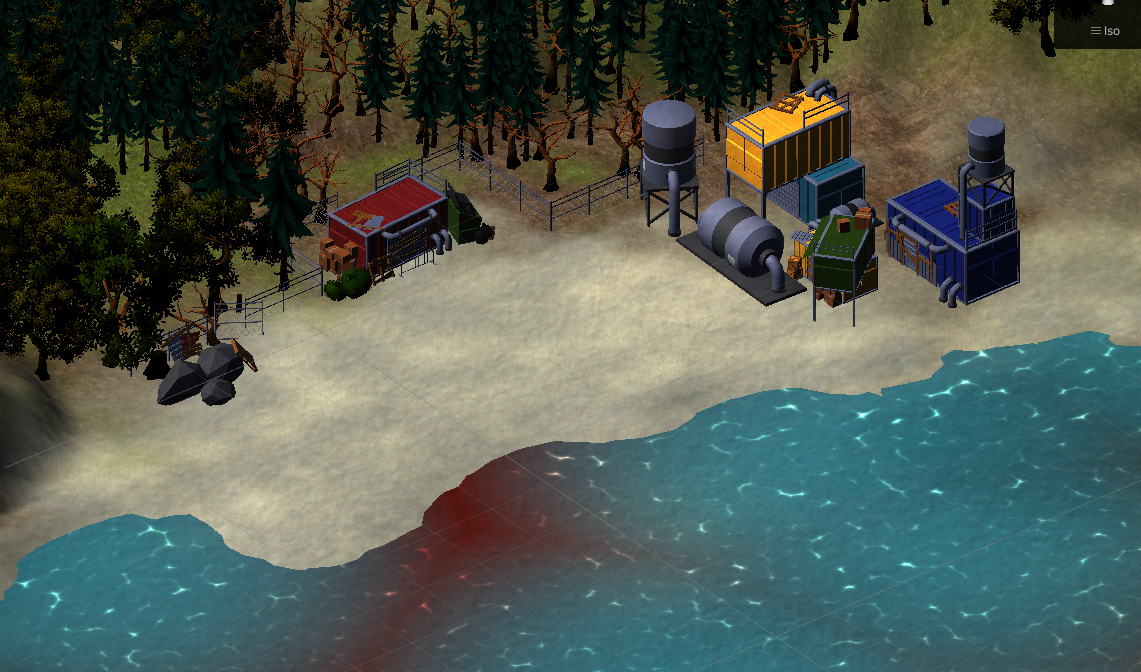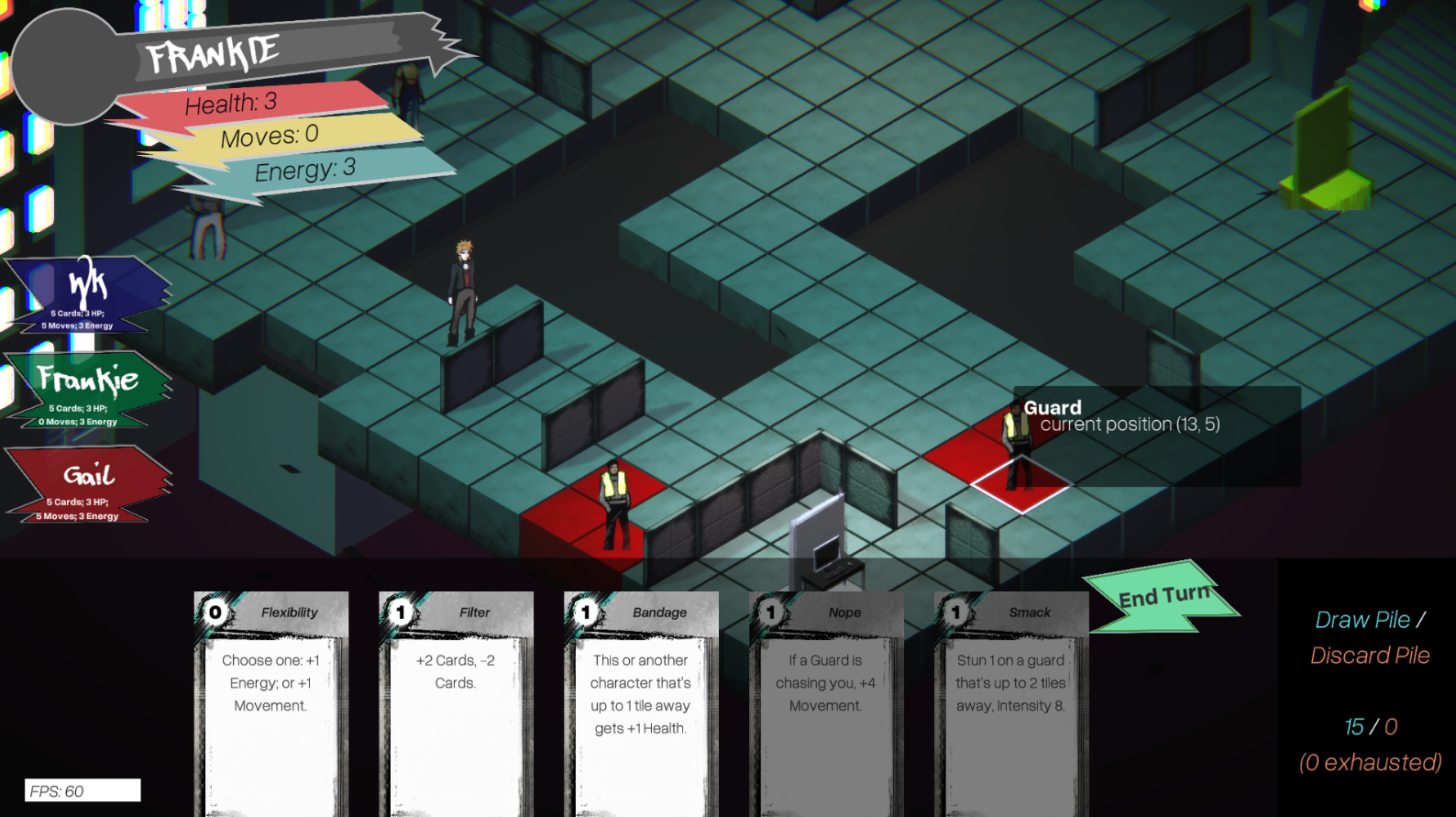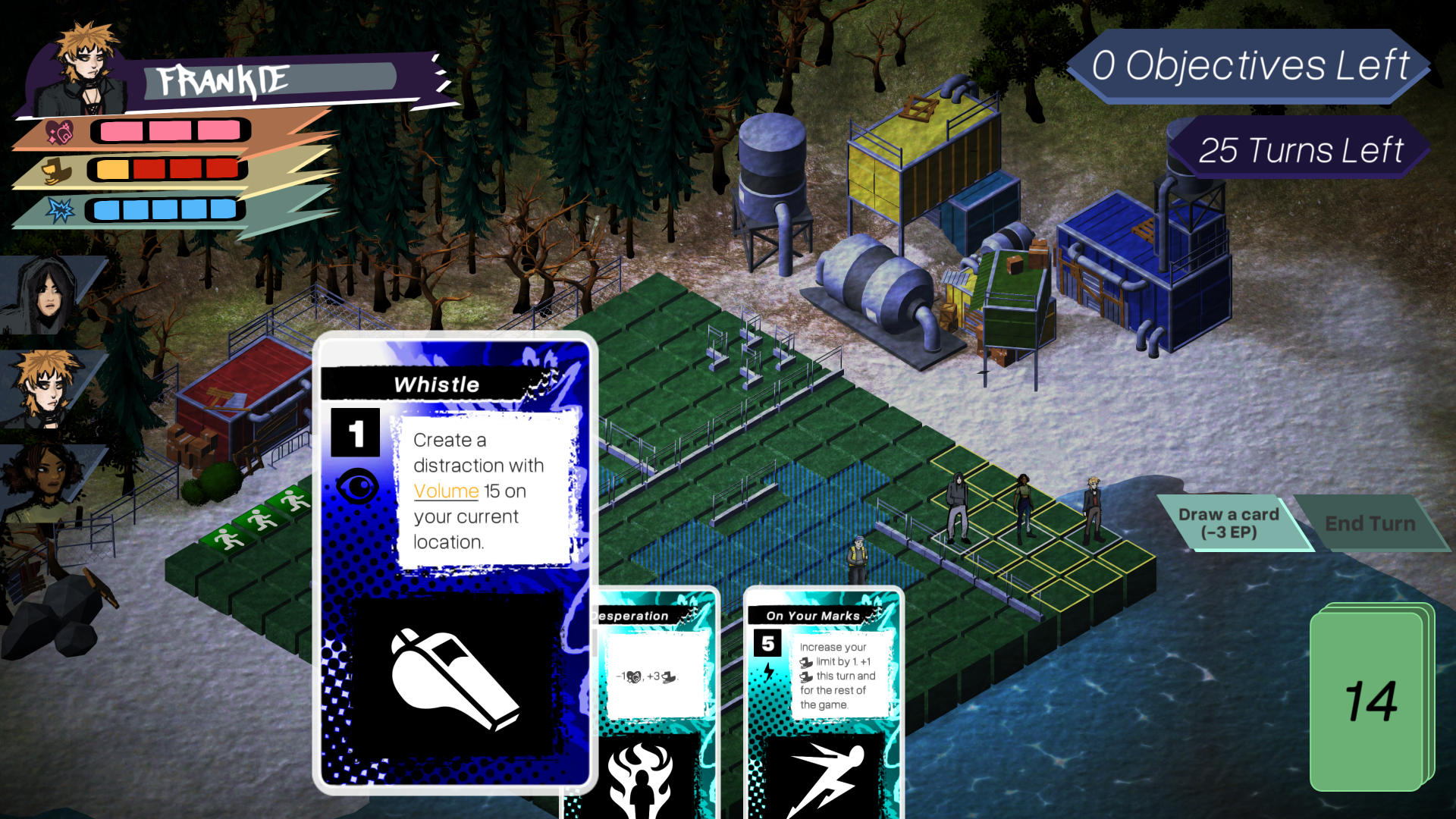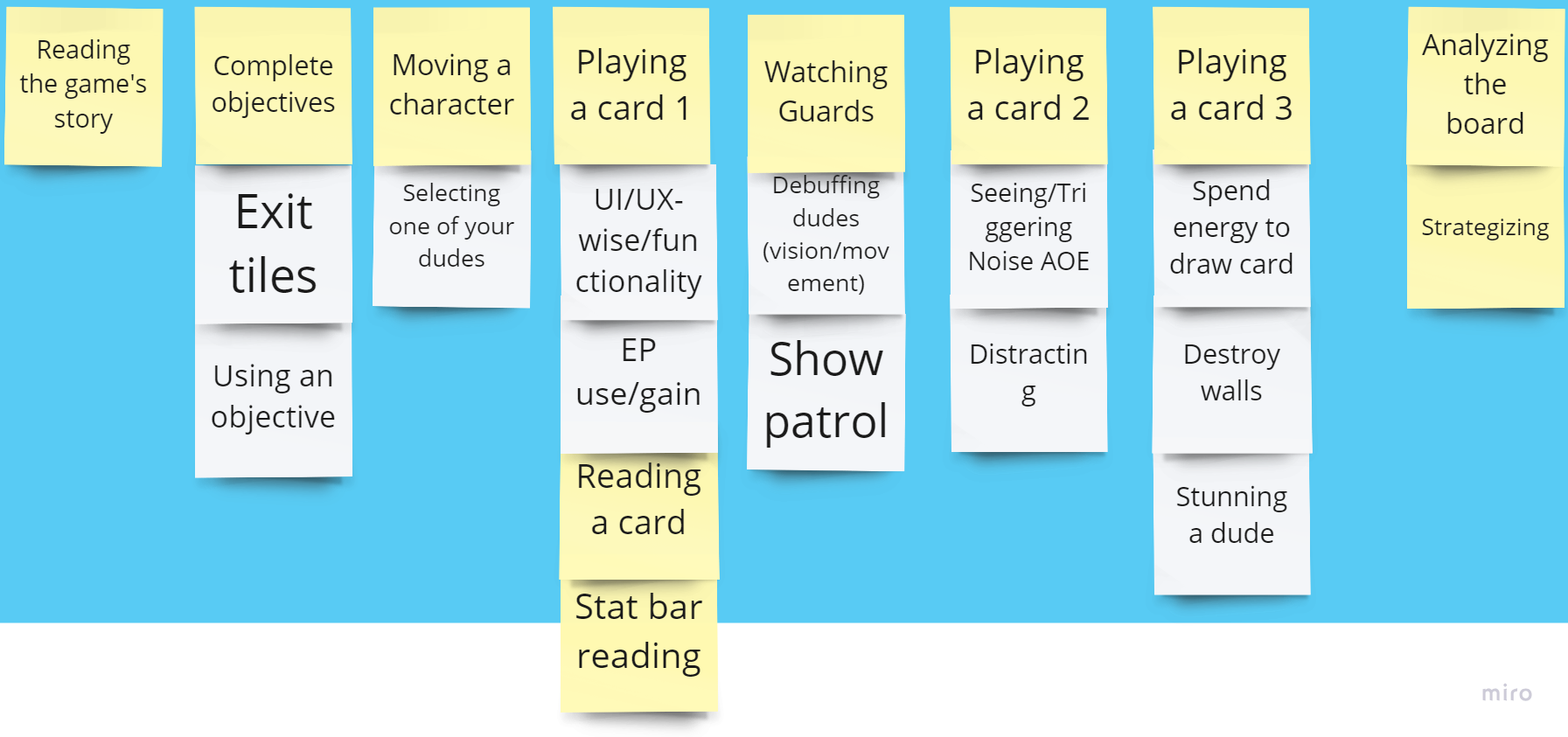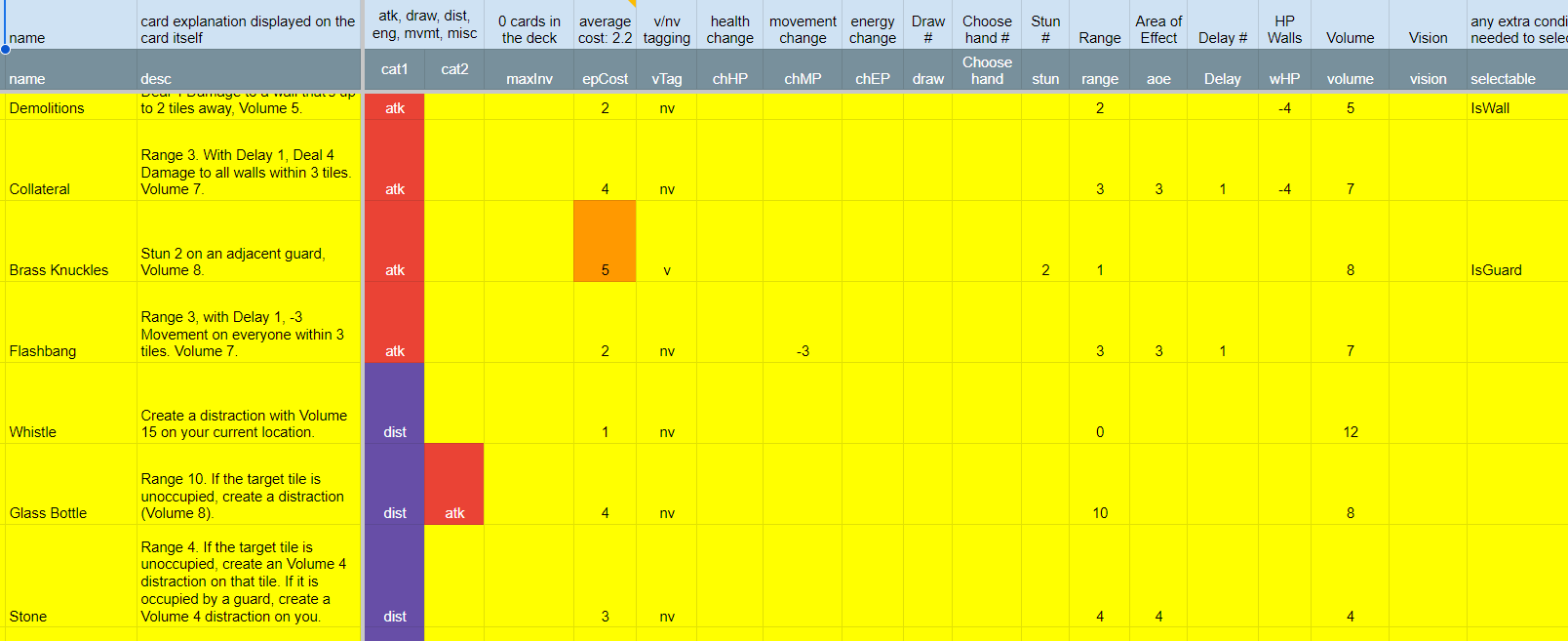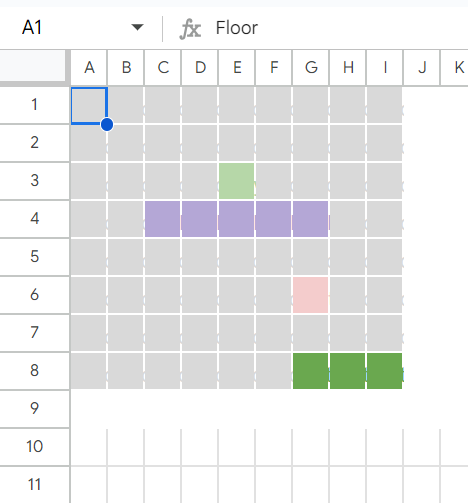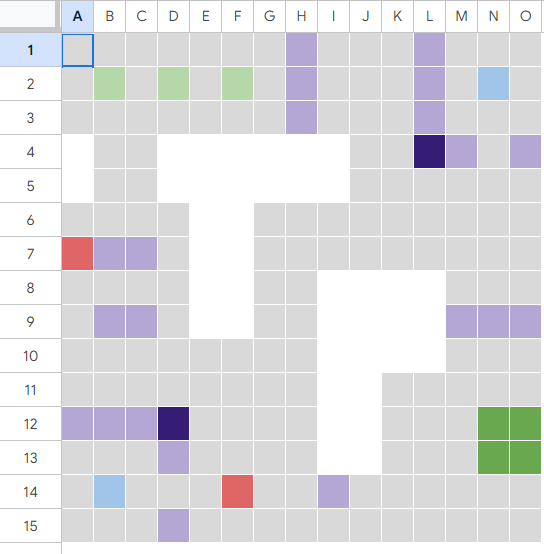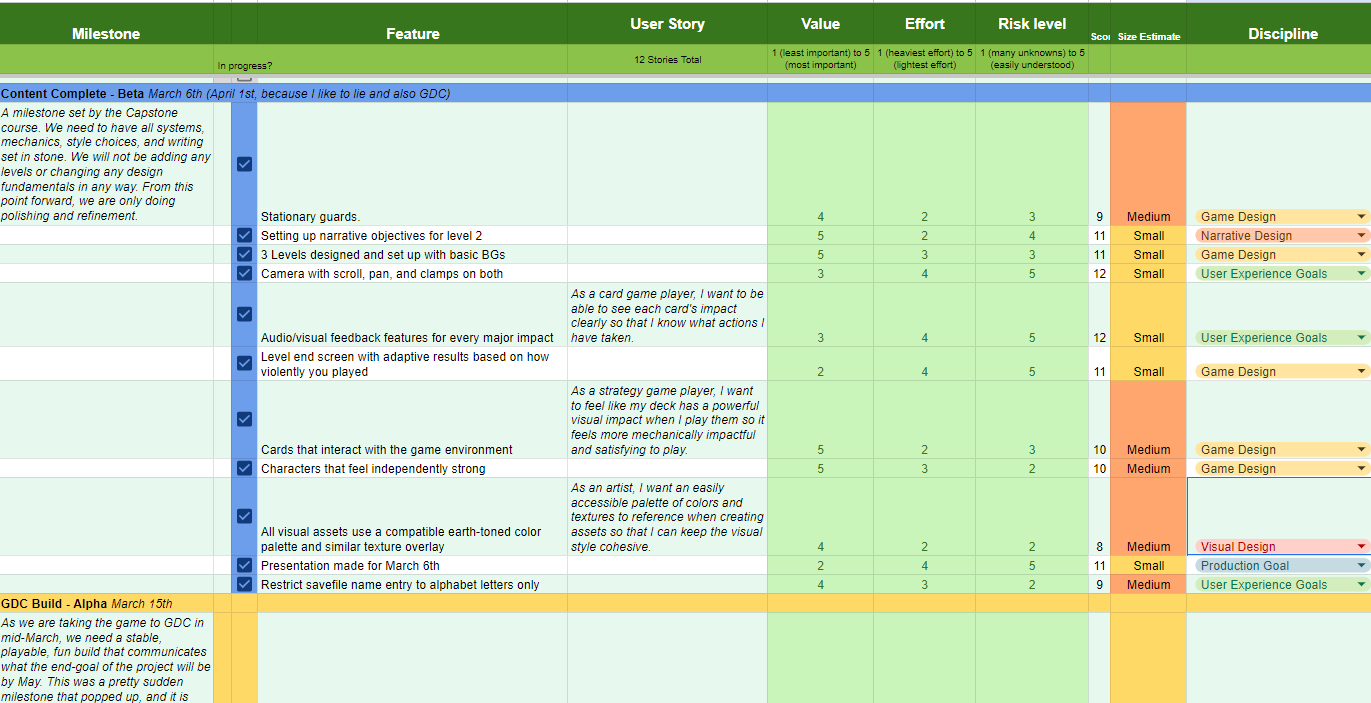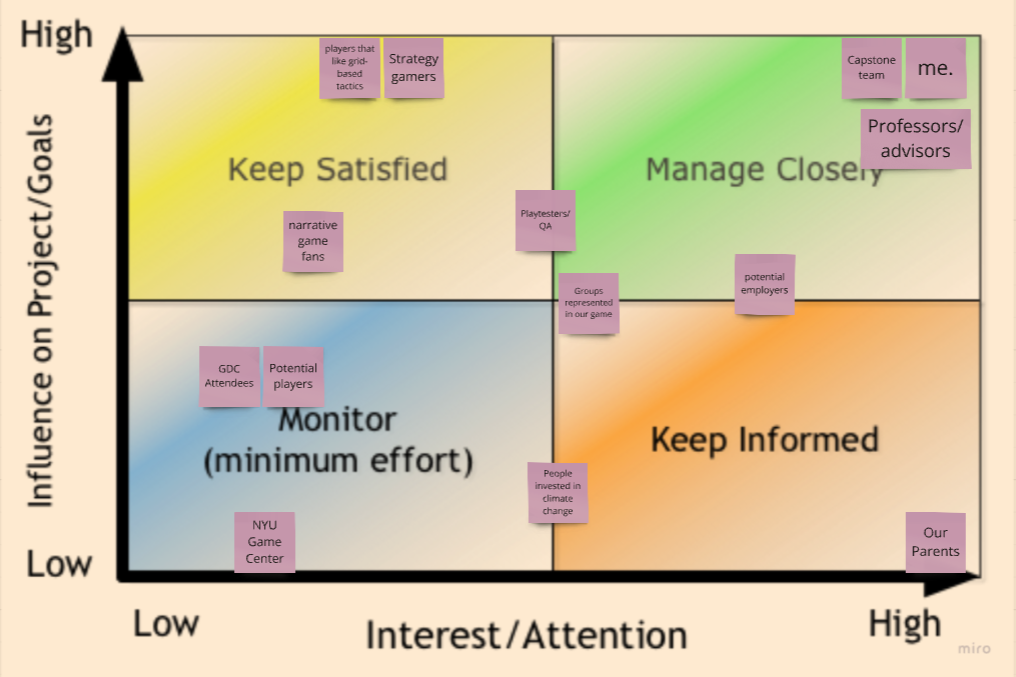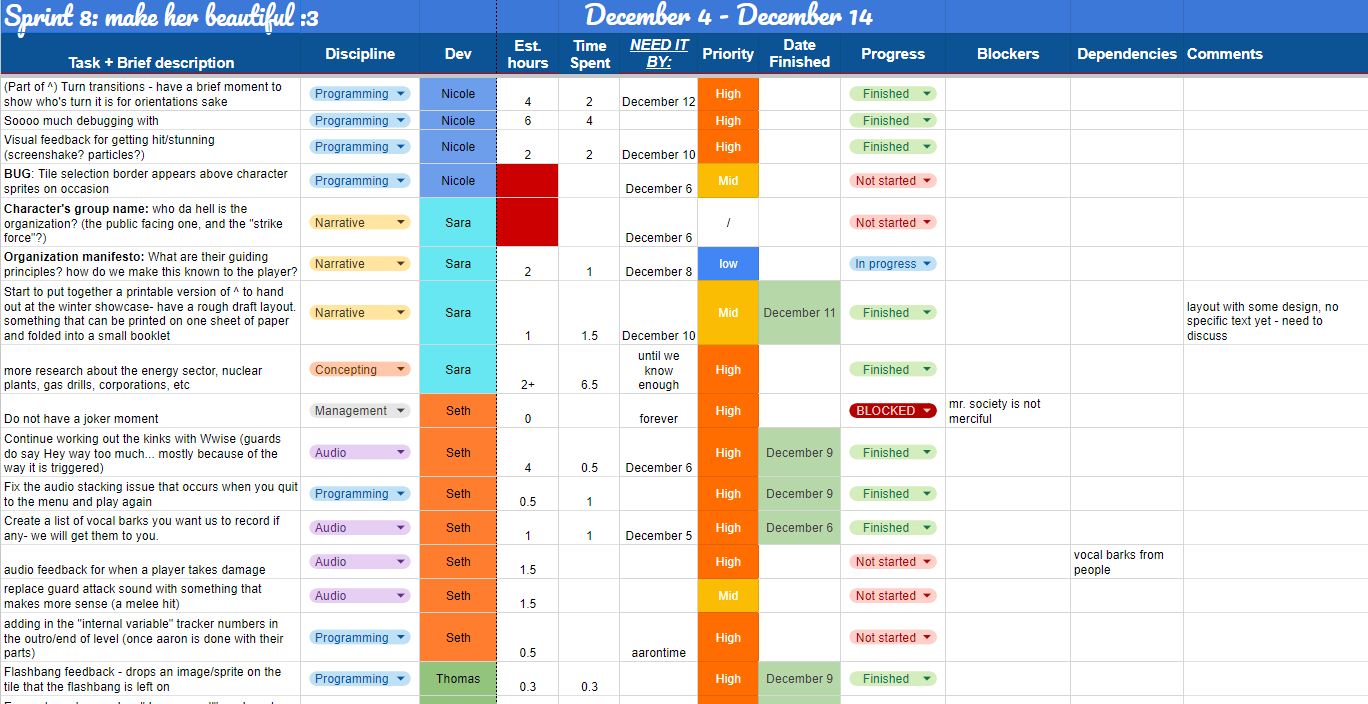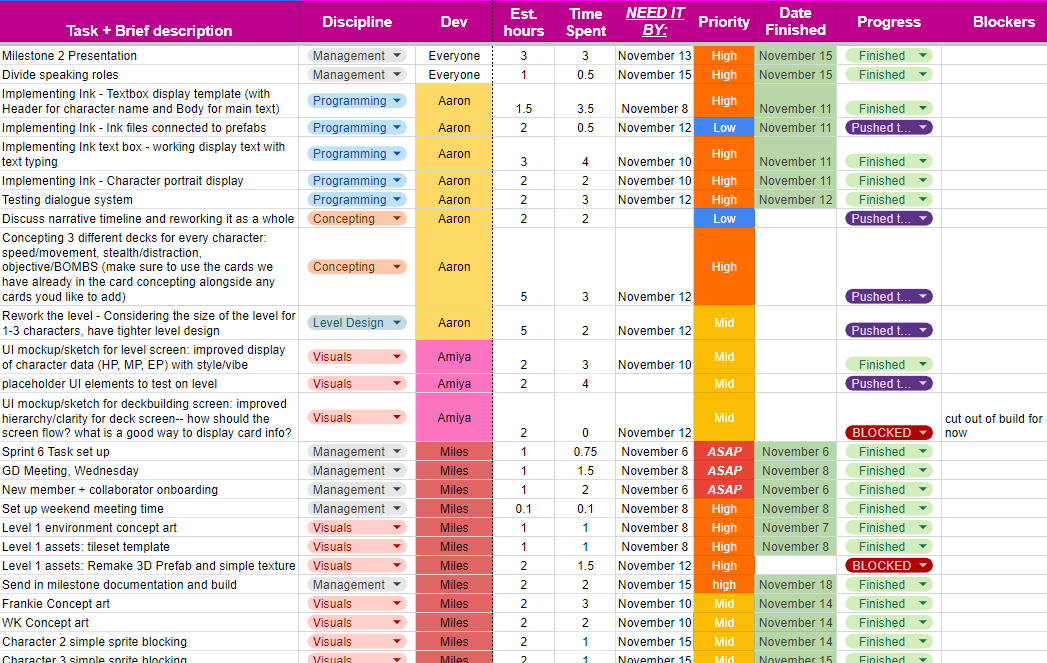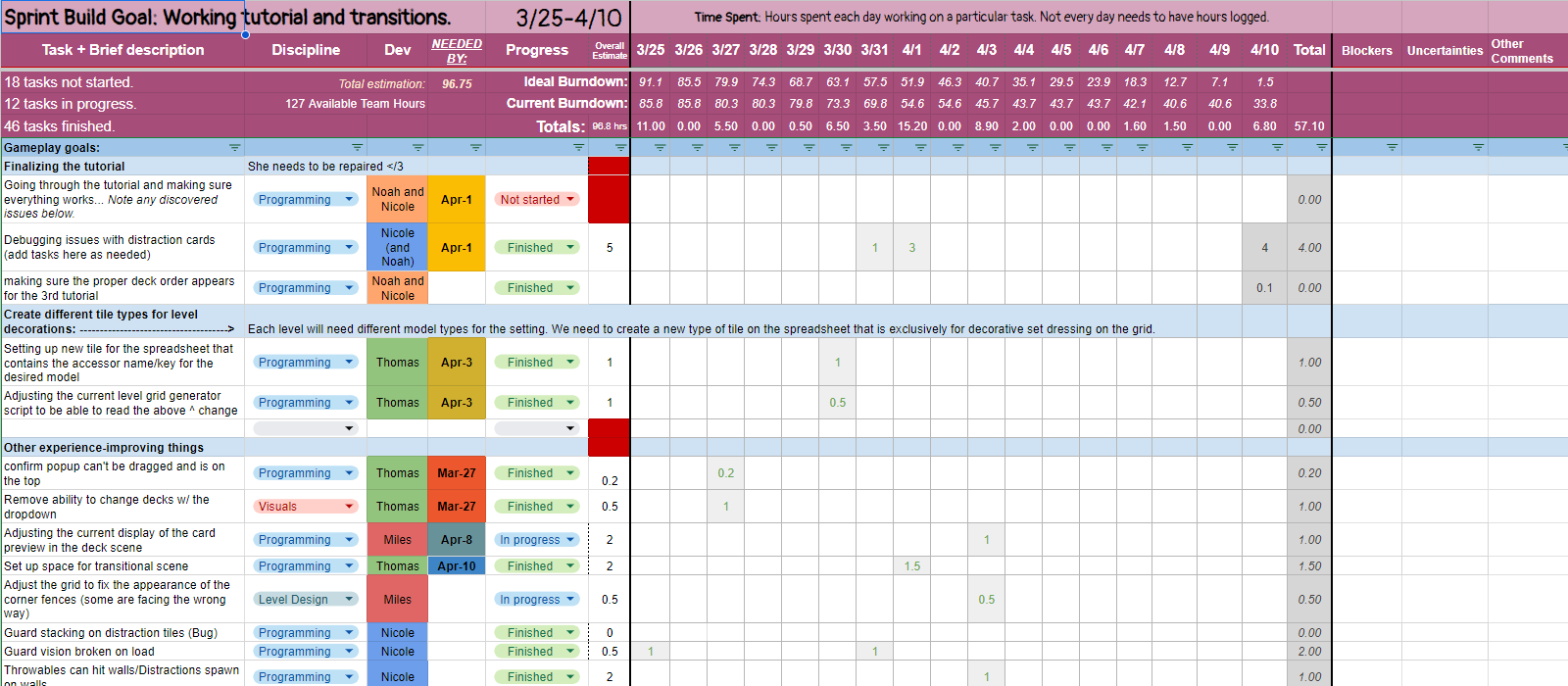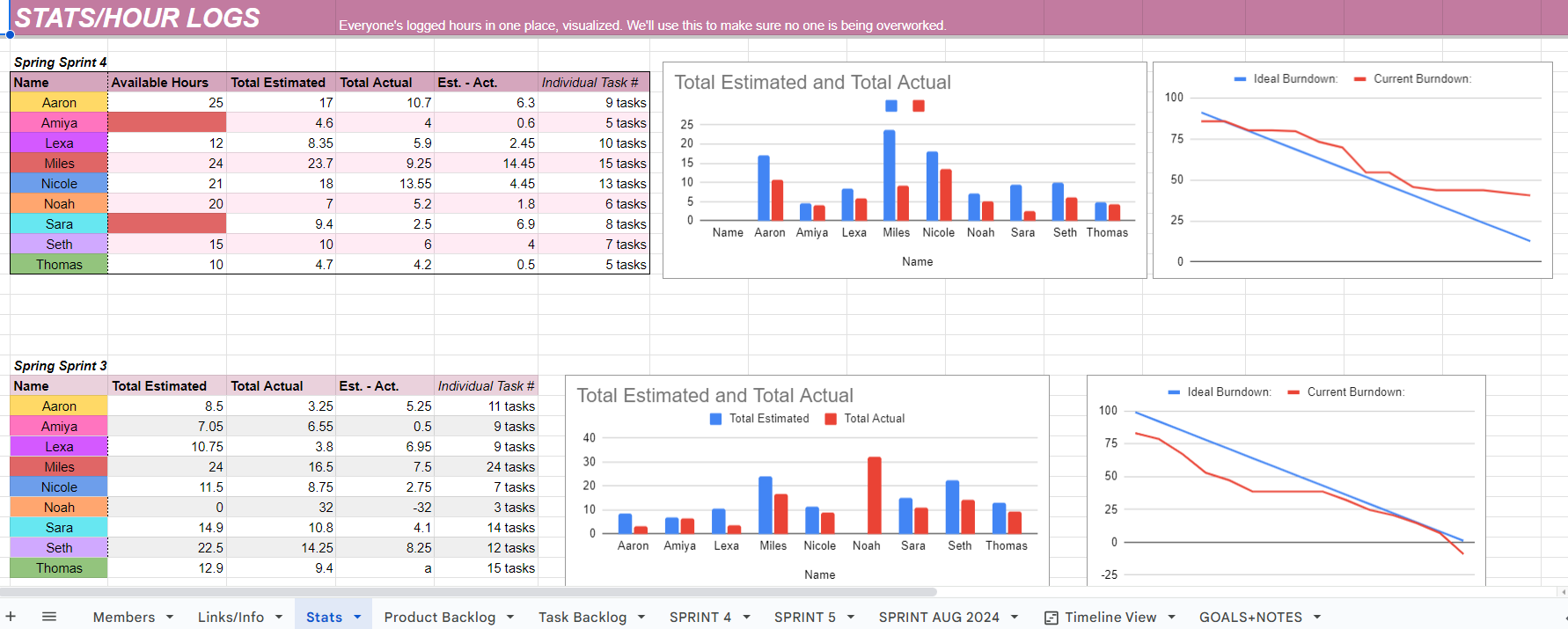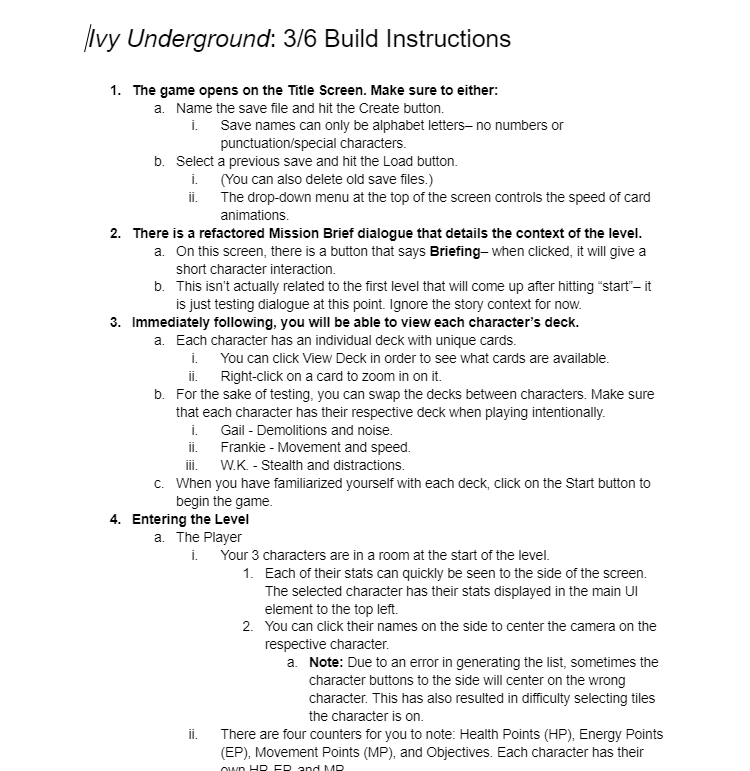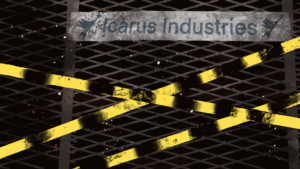

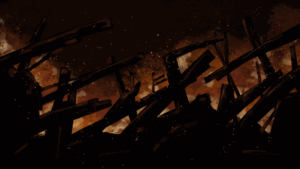
A fracking unit popped up on the outskirts of Revelations, Missouri in the winter of 2024. By spring 2025, local wildlife was bleeding out across lakes. The water didn’t run clear, it smelled of something wholly unnatural. People were dying.
False ideas about the company’s founders and origin run rampant. Everyone is pointing fingers but, with propaganda perpetuated by media companies and the government siding with lobbying corporations, the average person is left without answers. A devastating illness is sweeping the town, with no hope for a cure in sight.
That is, until a mysterious group of vigilantes starts hunting down anyone related to the case.
What is Ivy Underground?
My Roles: Project manager, lead artist, game designer, and assistant programmer.
Engine: Being developed in Unity (C#). Level and card generation done in spreadsheets. Uses Wwise for audio. Art assets made in Photoshop, Illustrator, and Procreate.
Ivy Underground is a stealth-strategy game that explores a young generation’s frustration with lack of action during the climate crisis.
Everyone has a personal duty to help the earth– but how much can a single person do? What options do we have when a faceless corporation creates more waste in a day than a family could in a year? Only one thing is certain: those seemingly “faceless” entities are run by people, too. They need to answer for the rotting planet like the rest of us.
You control a group of activists investigating the origins of a widespread illness in the small town of Revelations. Throughout their journey, they unearth parts of their home’s history through stealth operations and—when necessary— fighting to protect the people they love.
How far do we have to be willing to go to make change?
A demo version of Ivy Underground is currently undergoing reworks. It was developed for the NYU Game Center’s Capstone/Thesis course. The work-in-progress was showcased at the Game Developers Conference in 2024.

Process
Art


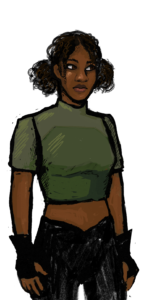



The art for Ivy Underground is inspired by works of rebellion, especially those of the climate activism scene. It needed to be rough, organic, and flowing to go along with the story and message we wanted to get out. This was difficult, however, because of the nature of game art: everything needs to be easy to parse quickly so frustration with mechanics doesn’t set in. We went through multiple styling passes to arrive where we are today.
Game Design
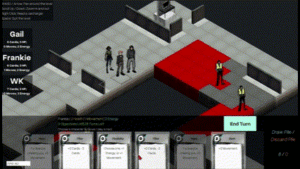
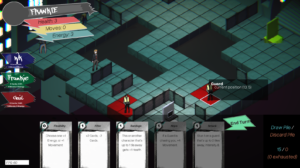
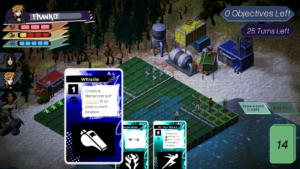
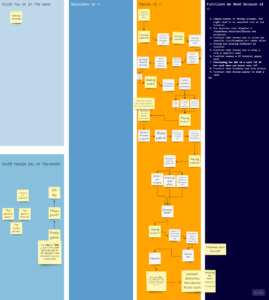
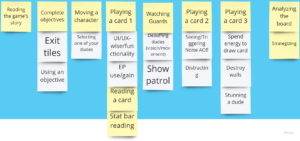
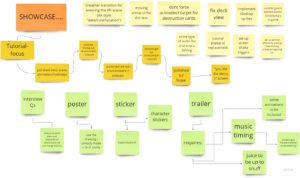


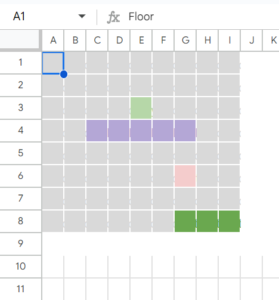
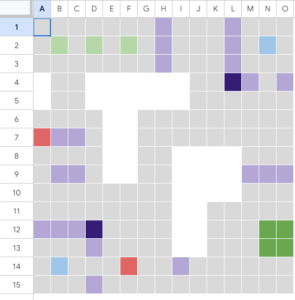
Production and Management


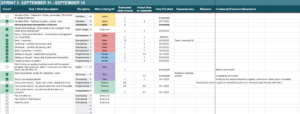
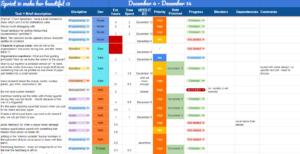



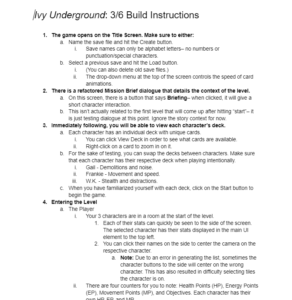
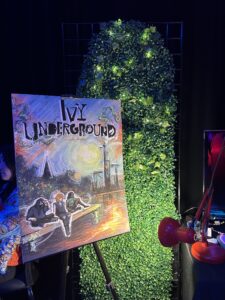
I was the project manager and producer on Ivy Underground. This was my biggest project to date and I had been working with a team larger than I’ve ever been in charge of- it was a dream. We started as the underdogs in our cohort; a minuscule team size compared to some other groups developing games alongside us. However, we’ve managed to pull through because of smart managing and meaningful time assignments.
I’ve made used of spreadsheets, SCRUM production strategies, and Jira management structures to ensure our success and passing of milestones in the six month cycle we were allotted for development. We started off in a scramble- one of my friends, Nicole, had an idea for a game mere days before our thesis pitches were due. I was planning on just watching and joining a group that had already been formed, but Nicole really conveyed what a project like this meant to her. I saw a great potential in it. I knew it had to get through. I spent a few days putting together a solid pitch deck and with a little bit of convincing, had enough members to form a proper (albeit tiny) team.
Many of our peers have already had their projects cut but, despite being one of the smaller groups, we had made it through. Initially, we had four people and a pitch. At the end of the project we had nine core members and multiple collaborators willing to aid us in development. Our team came a really long way from pitching a concept. The Ivy Underground prototype has been through multiple phases, consistent playtests, and many hard development and design choices. Overall, though, I think that this has been one of the most stable development cycles that I’ve worked in.
My interpretation of SCRUM and Jira principles adapts to my team’s needs. The hard-set principles of sprints, logging, and wikis remain, but when we are in need of new guiding principles I make sure to get the group together to ensure everyone’s needs are being met. We hold roundtables and stand-ups every day we are together, and one of the notable changes we’ve had over the course of development is creating a better pipeline for our team’s unique quirks- especially because we are all college students with unusual schedules, deliverables can be turned in at unexpected times. Our development has shifted to be more adaptable and allows for less hard blockages. Modularity has always been a guiding principle of my design and development process and I’ve been passing this onto the Ivy Underground team in more ways than one. Everyone knows how the core systems and designs work, even if they aren’t experts or leads within the given discipline. Our documentation and standardization of everything from code to art allows all the needed information to be available to everyone, regardless of who is around. With so many people working on different pieces of the game, this has been essential to the project’s success.

